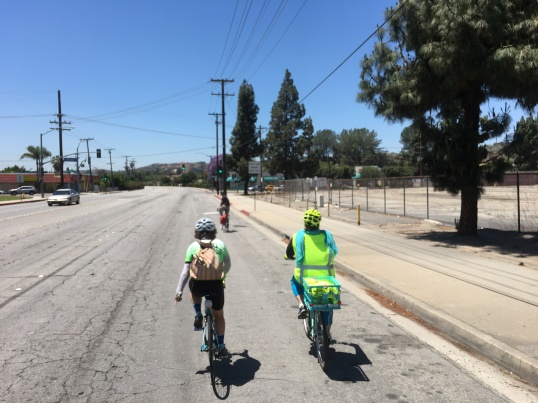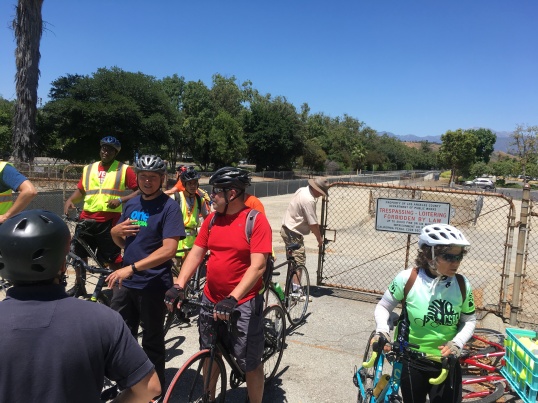Bike Week at Cal Poly
Our Bike Week events last week at Cal Poly Pomona were modest, but they underscored a sense that this longtime car-centric campus may be turning the corner when it comes to transportation.
For one thing, providing parking on campus is getting more expensive, and student parking fees will top $400 a year next year. No wonder, since the university’s new $40 million parking structure is one of the most expensive buildings on campus, and must be paid for–plus interest–with parking fees. For many students from low and middle income families, the parking fees are a big burden, especially with tuition and housing costs rising as well. And then there’s the traffic congestion that makes everyone’s life miserable and a little thing called climate change (emissions from motor vehicles are by far the largest portion of the university’s carbon footprint). Then there’s safety. Cyclists and pedestrians have been killed and injured by drivers in and around campus. Meanwhile an increase in students living on campus has meant more of them getting around on bikes. The time is ripe for new thinking about transit and bikes, and new campus leadership seems to be taking the issue seriously.
The university’s new President, Dr. Soraya Coley, has been supportive of efforts to encourage alternative transportation (the previous campus president once threatened to ban bikes from campus). The campus installed new bus shelters last summer and this year we’ll be getting new bike racks and bike repair stands at several locations on campus. Even bigger changes may be just around the corner, however.
This year the president created a new campus Transportation Advisory Committee that will take a more holistic approach to mobility, and next year’s update of the Campus Master Plan could provide a blueprint for a more bike- and transit-friendly campus. Better transit connectivity to campus and discount student transit passes will be a priority, but it is in bike infrastructure that we may see some of the most sweeping changes. I still can’t believe I’m writing these words, but the President recently approved installation of protected bike lanes on a stretch of Kellogg Drive that is being realigned to accommodate new student housing. Yes, you read that right. By September 2017 there should be protected bike lanes and improved intersections on a roadway where a cyclist was killed by a distracted driver a few years ago.
Friday May 19, our Bike Week was capped by what we hope will be an annual “Town & Gown” ride from the university to downtown Pomona, some 5 miles to the east. The ride, sponsored by the Pomona Valley Bicycle Coalition, included students and faculty from Cal Poly Pomona as well as community members and special guests like Pomona Mayor Tim Sandoval and Javier Hernandez, transportation coordinator for County Supervisor Hilda Solis. We were also joined by John Burton from the LA County Department of Public Works.
Along the way we saw some new bike lanes and sharrows on some of the area streets, and were told by Mayor Sandoval that busy Holt Ave. is slated to get bike lanes when it is resurfaced in the next year or so.
Most significantly however, the passage of Measure M last year and the County’s new greenways initiative, spearheaded by Supervisor Solis, means that nearby San Jose Creek flood control channel may get a bike path along the levee access road that would connect the campus directly to the city to the east (and all the way to the San Gabriel River to the west). As part of Friday’s ride, Hernandez and Burton temporarily unlocked the gates to the creek and the Town & Gown riders got a sneak peek at the proposed greenway. It is just a fenced dirt access road now, but with some asphalt and a couple of intersection upgrades, in a few short years it could be a bicycle superhighway that would enable hundreds–perhaps even thousands–of students to ride between downtown Pomona and the campus quickly and safely.
Cal Poly Urban and Regional Planning Professor Gwen Urey, who has championed this bike path for years and who helped organize the ride, noted that her longtime dream may finally be coming true. “Visions of doing the ride on a San Jose Creek route,” she wrote on Facebook after the ride, “have shifted from the stuff of pipes to the stuff of real planning.” Who knows? Pipe dreams may just come true.







